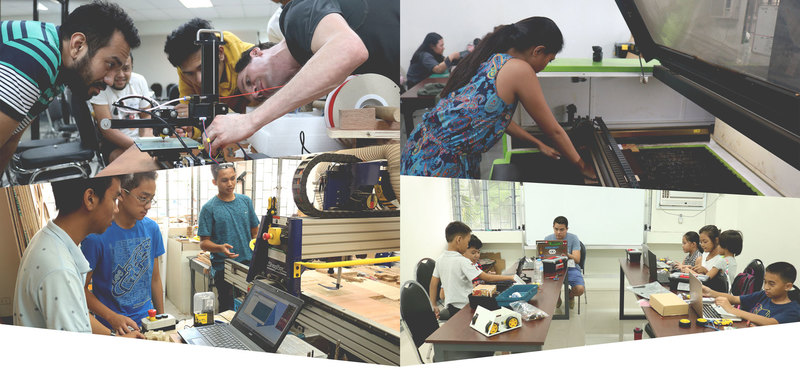
Photos from Fablab UP Cebu Facebook page.
CEBU CITY, Philippines — Art transcends the canvas and the paintbrush.
Apart from oil paintings and massive installations reaching the ceilings of fancy museums, art can come in forms such as the packaging of your favorite brands and the blueprints of building plans.
Inside the Digital Fabrication Laboratory of the University of the Philippines Cebu — or Fablab UP Cebu for brevity — the aesthetics of art and the wonders of technology meet to create masterpieces.
Fablab UP Cebu is a partnered venture between the Department of Trade and Industry Cebu and UP Cebu’s Product Design program.
Cebu is home to three of the 17 fablabs in the country. The fablabs are located in UP Cebu, Cebu Technological University Tuburan Campus and the Cebu Institute of Technology-University.
Fablab UP Cebu was opened in 2016 making it the first fablab in Cebu. It was established alongside a Negosyo Centre, which is a government-funded business incubator, and its co-working space.
But what is so special about a fab lab?
What’s in it that makes it a hub for creation and innovation?
Fablab UP Cebu is equipped with a 3D printer, laser cutter, printer and cutter, desktop vinyl cutter, computer numerical control (CNC) router, and benchtop milling machine.
Having these tools at the fablab give design students, makers, professionals, owners of micro, small and medium enterprises and the public access to advanced prototyping and printing equipment. It also provides facilities for trainings, workshops and learning sessions.
The computer numerical control milling is one of the equipment at the Fablab UP Cebu. It employs computer numerical control counter and rotating multi-point cutting tools to produce a custom-designed program. CDND Photo / Isabella Angan
Noel San Pedro, one of the managers of the UP Cebu Fab Lab and a professor of the university’s Fine Arts Department, says the fab lab is a helpful venue for both students and business professionals who need to materialize their designs.
San Pedro says usage of the facility is not only limited to UP students but also extends to any members of the community, who are interested to turn their designs into tangible creations.
He said that makers can work and experiment on new designs more because they will be charged according to the length of time that they use the equipment and not each by material that they produce.
He added that the work done in the fab lab is accurate because the machines are able to cut out designs on different materials such as metal and wood.
The fablab’s three-year operations have transformed the space, which was once an infomal studio of Fine Arts students, into an avenue of community creators with a common goal of transforming their designs from paper to actuality.
Even elementary school children can learn about digital fabrication through scheduled school tours inside the fablab.
What’s the best part about working in fablab, you might ask?
You will meet individuals who are passionate and fascinated at combining arts and science.
Fablab UP Cebu’s 3D printer in action. CDND Photo / Isabella Angan
These creations can make significant differences in society and the lives of the people.
Without a conducive facility for makers to create, we may never know that the possibility of solving Cebu’s horrific traffic situation lies in the hands of an innovator that will carry out experiments and prototypes inside the fablab.
When that happens, we will definitely have another proof that art cannot only speak; but most importantly, it can do.
For now, the door is open at Fablab UP Cebu for learners, artists, creators and everyone in between who will embrace the fablab as their zones of comfort and venues for learning. / celr & roa